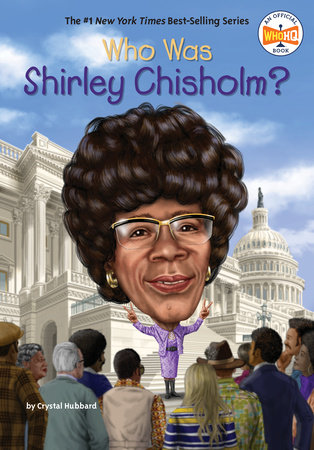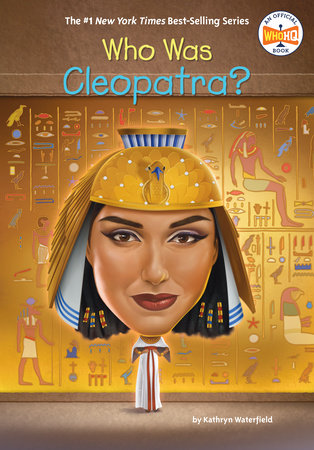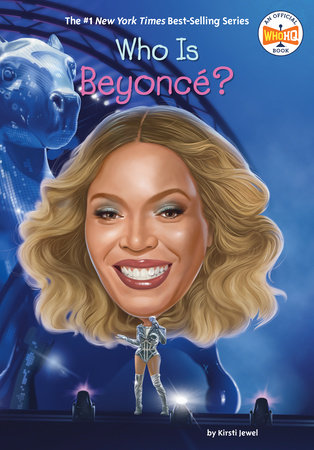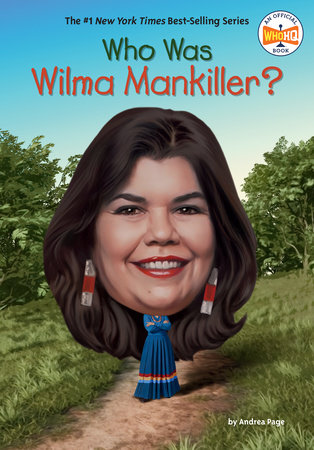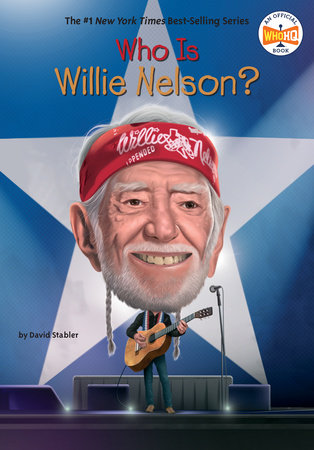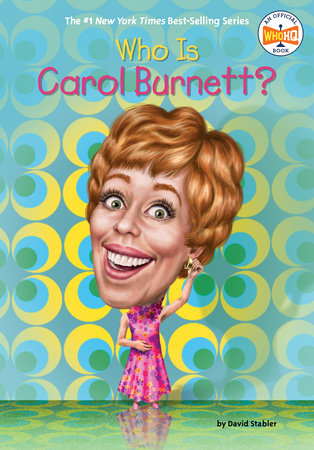Excerpt
Who Was Shirley Chisholm?
Who Was Shirley Chisholm?
On January 25, 1972, US Representative Shirley Chisholm stood at the front of the auditorium in the Concord Baptist Church of Christ in Brooklyn, New York. Reporters with their notepads and photographers with blinding flashes on their cameras waited for the tiny forty-seven-year-old woman in front of them to speak. Shirley smiled broadly, leaned into the row of microphones before her, and announced that she would run for the presidency of the United States.
She was the first Black woman to ever seek the nomination for president. Shirley had already made history in 1968 when she became the first Black woman elected to the United States Congress. She knew that the road to the Democratic nomination for president would be difficult, but she had never been afraid of hard work or a challenge.
“I am not the candidate of Black America, although I am Black and proud,” Shirley declared. “I am not the candidate of the women’s movement of this country, although I am a woman, and I’m equally proud of that. . . . I am the candidate of the people of America!”
Shirley nodded and waved as the audience applauded for her and cheered. Shirley became a politician so that she could fight for better lives for ordinary people. She had the support of the people in the church auditorium that day, but Shirley was realistic. She knew the battle for the presidency would be the toughest fight of her life.
Chapter 1 A Taste of Barbados Shirley Anita St. Hill (pronounced “Saint Hill”) was born on November 30, 1924, in Brooklyn, New York. Her parents, Ruby Seale St. Hill and Charles Christopher St. Hill, were from Barbados. They lived in the Brownsville neighborhood of Brooklyn. Ruby worked as a seamstress and also took jobs as a maid. Charles worked at a bakery. Her parents made very little money, but Shirley and her sisters were happy. She especially liked having lots of children to play with in the neighborhood, although she liked to give orders and expected them to be obeyed.
“Mother always said that even when I was three, I used to get the six- and seven-year-old kids on the block and punch them and say, ‘Listen to me,’ ” Shirley said.
In 1928, Ruby and Charles made the decision to take Shirley and her little sisters, Odessa and Muriel, to Barbados. The three girls would live with Ruby’s mother, Emmeline Seale, on the beautiful Caribbean island while Ruby and Charles worked and saved money to provide a better life for them.
Ruby, Shirley, Odessa, and Muriel spent nine days on a ship traveling to Christ Church, Barbados. Deep in the countryside of the island, they arrived at Ruby’s mother’s farm. Grandma Emmeline was waiting to greet them.
Shirley discovered island life was very different from life in Brooklyn. The sounds of the animals on the farm replaced the noise of cars and traffic. The heat on the farm could be oppressive, but swimming in the ocean brought the girls relief. Shirley was most surprised by Grandma Emmeline’s outhouse. The outhouse was an outdoor enclosure with a bench seat inside. The bench had two holes with a deep pit beneath it.The outhouse was an outdoor toilet. It was very different from the indoor bathroom Shirley knew at home in Brooklyn!
School on the island was different, too. Because Barbados had been colonized (controlled) by England, children there were taught in the British style of education. Dozens of students between four and eleven-years old were taught at the Vauxhall Primary School, a one-room building. Students wore simple uniforms: short-sleeve shirts with jumpers for girls and shorts for boys. Students were expected to follow strict rules. A student could be whipped as punishment for bad behavior.
Shirley learned to work hard at school and on the farm. She fed and watered chickens and cows. She studied and learned to read and write before her fifth birthday. She loved Barbados. She saw brown-skinned people everywhere, doing everything from farming to teaching to running their own businesses. Shirley realized that she could grow up to do anything she wanted.
Shirley was nine-and-a-half years old when she and her sisters returned to New York aboard the SS Nerissa in the spring of 1934. They had been gone for almost six years, and Ruby wanted her girls back home with her to meet Selma, their new baby sister. Even though she liked the bigger house her parents had bought for the family in the Bedford-Stuyvesant section of Brooklyn, Shirley missed the warmth and slower pace of Barbados. And she kept the slight island accent she had picked up.
Charles and Ruby made sure Shirley and her sisters continued learning at school and at home. Charles read newspapers and talked to Shirley about what was going on in the world. He was especially interested in the beliefs of Marcus Garvey, a political activist from Jamaica. Charles taught his daughters that all people, no matter their race, no matter how much money they had, should be treated equally. Shirley was inspired by her father’s belief that every person should make something of themselves.
Brooklyn, New York Brooklyn is one of New York City’s five boroughs. If New York City was a country, its boroughs would be its states. Brooklyn has the largest population of all the boroughs. Its neighborhoods are very diverse. Migrants from Barbados, Jamaica, Puerto Rico, and other Caribbean islands settled there. Immigrants from faraway places such as Ireland, Italy, Germany, Pakistan, China, Ukraine, Lebanon, Poland, and Greece built Brooklyn into a residential and cultural center that has been featured in books, movies, and music. Jewish people make up about a fourth of Brooklyn’s total residents.
A Tree Grows in Brooklyn by Betty Smith is one of the most famous novels set in the borough. It’s the story of a girl who fights to overcome the struggles of poverty to make a better life for herself. Marcus Garvey (1887-1940) Marcus Moziah Garvey Jr. was born in a Jamaican settlement named Saint Ann’s Bay. He founded the Universal Negro Improvement Association (UNIA) in 1914. His goal was for Black people to be independent. Marcus moved to the United States in 1916, where he created a UNIA branch in the Harlem neighborhood of New York City. Marcus promoted unity between Black people in America and those in Africa. He argued for an end to European countries controlling colonies in Africa. He wanted to connect and unify people of African descent, no matter where they lived. Marcus had lived in England, Costa Rica, and Panama. And even though he had never even visited Africa, he called for Black Americans to move there. Marcus’s ideas about separating Black people from other races helped him create a relationship with the Ku Klux Klan, a white supremacist terrorist and hate group that also wanted to see Black and white people live separately. Other civil rights activists who promoted Black progress or racial integration, referring to the uniting of different races, did not approve of Marcus’s relationship with the KKK. Marcus was involved in other big controversies. In 1919, the Federal Bureau of Investigation (FBI) hired its first Black agent to spy on Marcus. He was deported from the United States in 1927. He died in London in 1940. Chapter 2 Excelling in Education Ruby set a few rules in place for Shirley once she became a freshman at Brooklyn’s Girls’ High School, an elite public school. Shirley was allowed to join the Junior Arista Honor Society, and she was voted vice president. She was to come straight home from school every day to do her homework, then practice playing the piano. She was to have nothing to do with boys.
Shirley broke those rules by allowing boys to walk her home from school. Rather than classical music, she played jazz on the piano. When Ruby caught Shirley coming home late from school, she gave her a stern lecture on why the rules were important. Ruby wanted Shirley to become something more than a seamstress or maid. To do that, Shirley would have to focus on her schoolwork and earn good grades. Excelling in school would give Shirley more choices for her future.
Shirley was a very good student. She received a medal of excellence for her skill at French when she graduated. Several colleges accepted her. Vassar and Oberlin offered her scholarships, but Ruby and Charles couldn’t afford to send her to those schools. Shirley graduated high school in 1942 and decided to attend Brooklyn College, which offered free tuition and was close to home.
College was a new and wonderful world! Shirley was a quick study in her classes in sociology and Spanish. She enjoyed meeting students from other countries, and she participated in different activities. She joined the debate team—-a natural fit for Shirley, who never had a problem speaking her mind. She also joined the Harriet Tubman Society, where she learned even more about Black history. Black women were not encouraged to study law or politics at Brooklyn College, so Shirley joined the Political Science Society. Shirley pledged the Delta Sigma Theta sorority and was accepted. She attended parties and dances and loved being in college.
Her political science teacher, Professor Louis Warsoff, asked her to consider a career in politics.
She was a very good debater and had a strong desire to help people. But Shirley wasn’t so sure. She graduated from Brooklyn College in 1946 with a bachelor of arts degree. She had majored in sociology and minored in Spanish and decided that teaching would be the best way for her to help others.
Finding a job wasn’t easy. Shirley was short. She was just over five feet tall, and she looked much younger than she was. Some people didn’t think she was old enough to be a teacher. When she interviewed for a job at a nursery school, she lost her patience. “Don’t judge me by my size!” she said. “Give me a chance to find out whether I can do the job!”
Shirley was hired on the spot, and she became a teacher’s aide at the Mount Calvary Child Care Center in Harlem. She also started dating a Jamaican graduate student she met at Columbia University’s Teachers College. His name was Conrad Chisholm, and he was a private investigator. Shirley was twenty--five years old when she and Conrad married in 1949 in a big, traditional Jamaican--style ceremony. They settled in a small apartment in the Bedford--Stuyvesant neighborhood of Brooklyn.
Traditional Jamaican Weddings Jamaican weddings are full of traditions that make a special day even more remarkable. The bride and groom are the stars of the wedding, but the families that raised them are honored, too. On the wedding day, friends and family form a processional—a kind of parade—to the church. Both parents, not just the father of the bride, walk the bride to her groom. At the reception, the party after the wedding ceremony, the newly married couple make their grand entrance to the cheers of their friends and family. The traditional Jamaican wedding cake is not a fancy tower of vanilla or chocolate cake. Jamaican black rum cake is an important part of a Jamaican wedding. The cake is made with dried fruits soaked in rum for the entire time of the engagement. The cake is also seasoned with fragrant spices, such as nutmeg and cinnamon. It is very rich in flavor and decorated with royal icing. Curried goat and jerk chicken are on the menu for the reception dinner, and rum punch is served. Shirley didn’t stop working just because she got married. She worked during the day and took classes at Columbia University’s Teachers College at night. She earned a master’s degree in early childhood education in 1951.
Shirley’s Heroes Shirley Chisholm was greatly influenced by her beloved grandma Emmeline, but two other women also inspired Shirley as she grew up. Eleanor Roosevelt, wife of President Franklin Roosevelt, and Mary McLeod Bethune were intelligent, professional women who worked in the highest levels of America’s government.
As First Lady, the president’s wife, Eleanor helped female reporters participate in presidential press conferences. She also helped bring attention to issues that affected women. Mary worked to improve the lives of Black Americans through education and participation in politics. Mary was also an advisor to President Roosevelt. She and Eleanor wanted to reform the Democratic Party so that it would include more women and Black people, which became a goal of Shirley’s as well.


